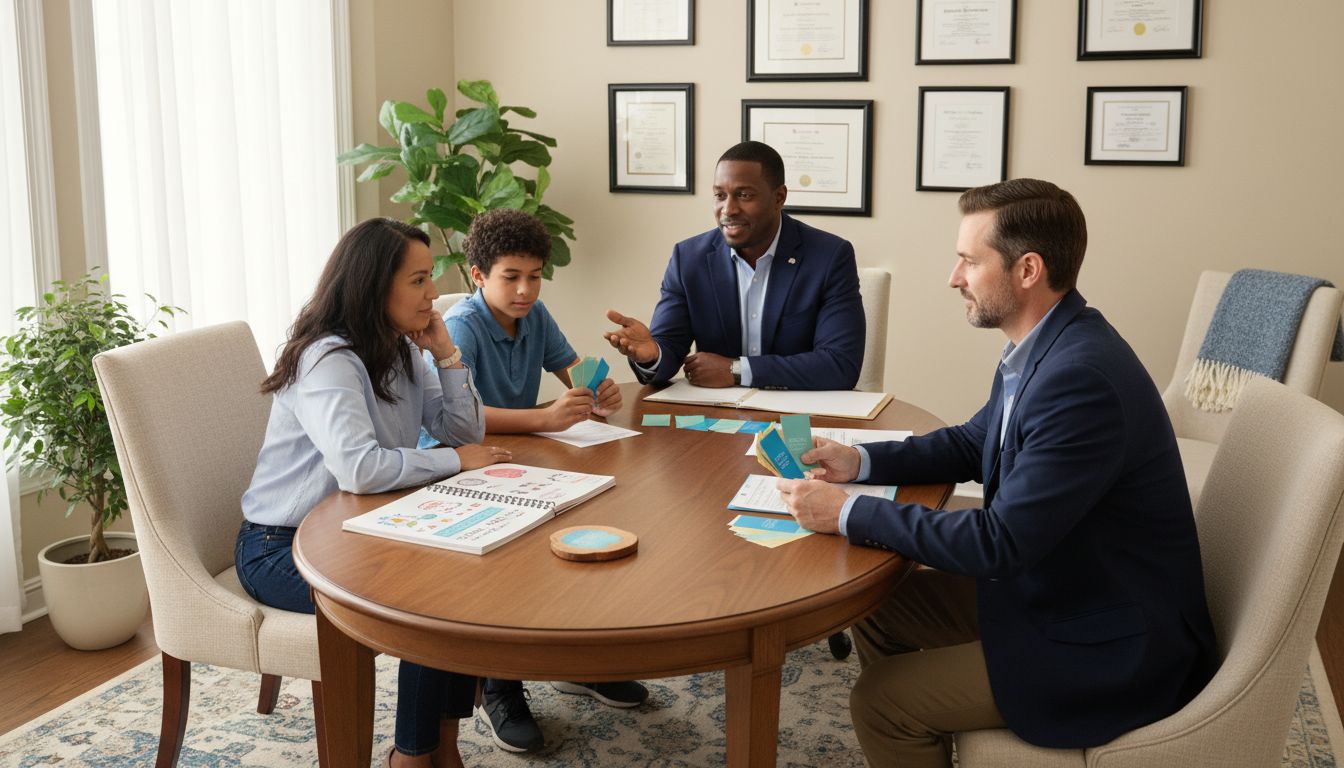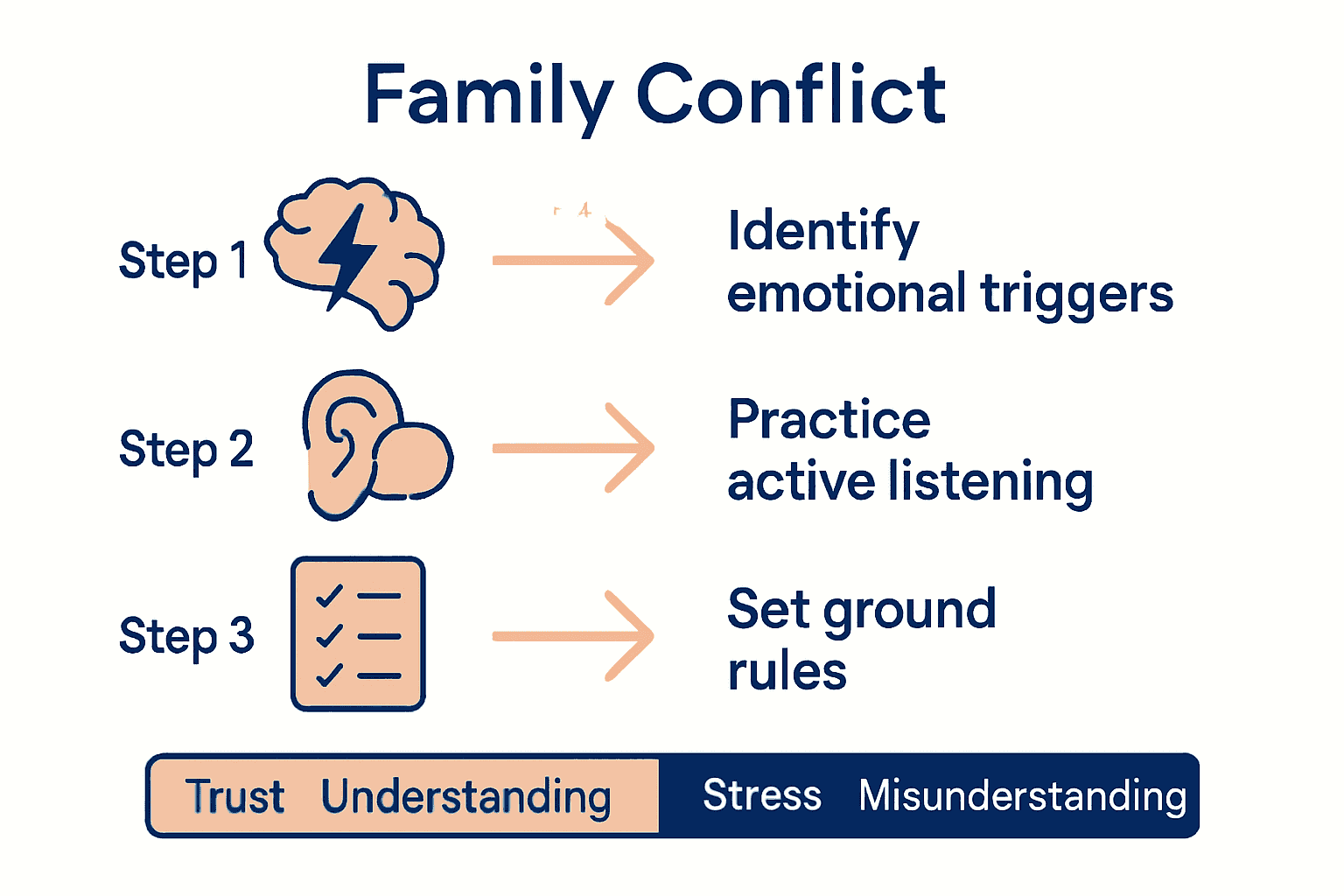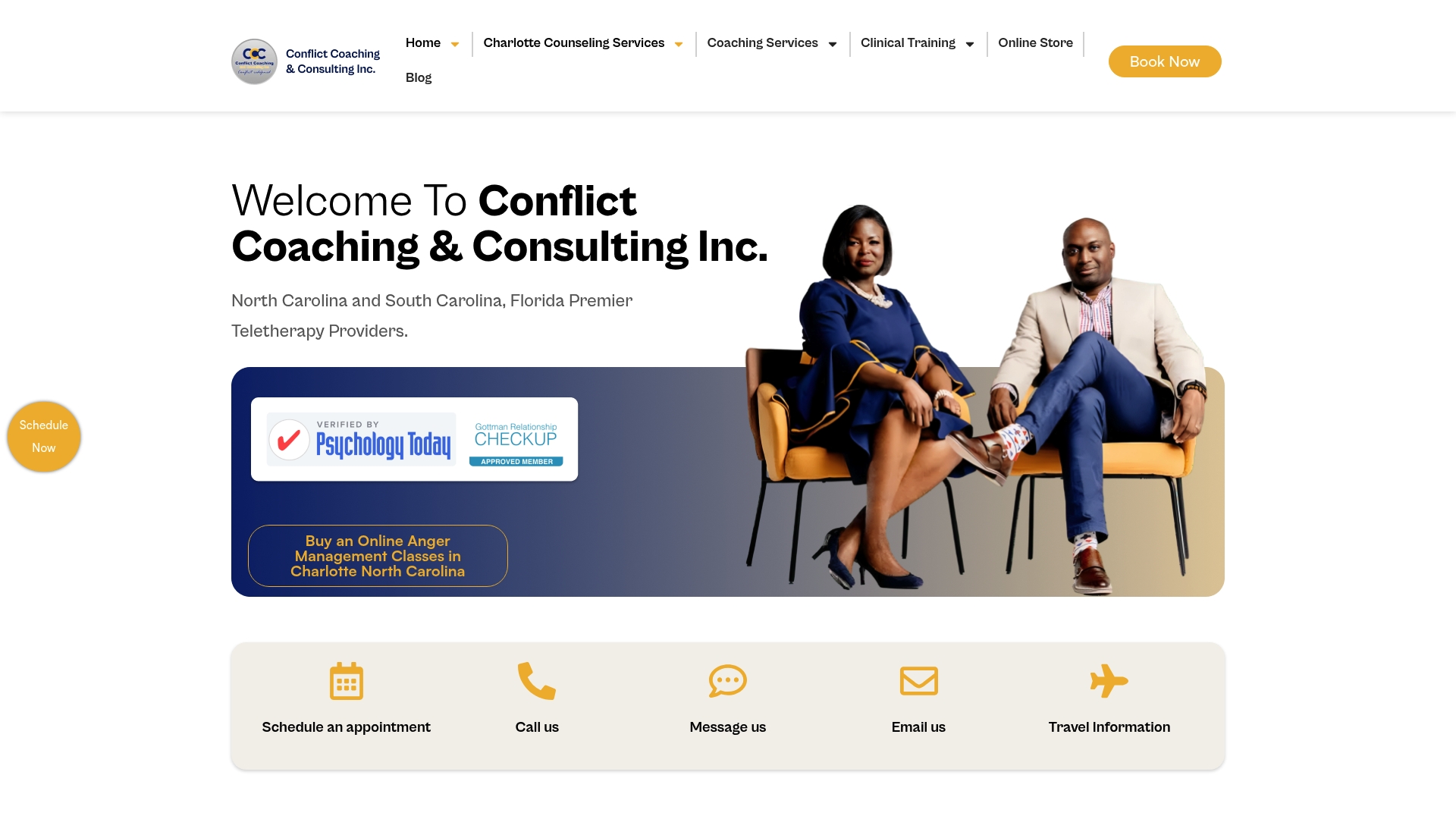Navigating Family Conflict for Positive Relationships
Nearly 60% of families report that conversations often lead to misunderstandings and stress. Tension can build quickly when emotions run high, leaving everyone feeling unheard. Learning how to handle these moments with empathy and skill helps transform conflict into stronger connections. This guide gives you simple steps to prepare for meaningful talks, recognize hidden emotions, communicate clearly, resolve conflicts calmly, and keep your family growing together.
Table of Contents
- Step 1: Prepare For Meaningful Family Conversations
- Step 2: Identify Underlying Triggers And Emotions
- Step 3: Apply Effective Communication Strategies
- Step 4: Implement Calm Conflict Resolution Techniques
- Step 5: Evaluate Progress And Adjust Family Strategies
Quick Summary
| Key Point | Explanation |
|---|---|
| 1. Prepare emotional environment for conversations | Select a neutral, calm setting to discuss sensitive topics, ensuring everyone feels safe. |
| 2. Identify and understand emotional triggers | Keep an emotion journal to track responses and uncover underlying feelings influencing reactions. |
| 3. Use effective communication techniques | Apply active listening and use ‘I’ statements to express feelings without blame. |
| 4. Implement structured conflict resolution | Set ground rules for discussions to maintain respect and allow everyone to voice their opinions. |
| 5. Regularly evaluate communication strategies | Hold monthly check-ins for feedback on what communication methods are effective or need improvement. |
Step 1: Prepare for Meaningful Family Conversations
Preparing for meaningful family conversations requires thoughtful planning and emotional intelligence. By setting the right foundation, you can transform potentially difficult discussions into opportunities for understanding and connection.
According to Headstart.gov, effective conversation preparation begins with building trust and creating a supportive environment. Start by choosing a neutral time and location where everyone feels comfortable and safe. Select a moment when family members are not stressed or distracted, such as after a shared meal or during a relaxed weekend afternoon.
The Virtual Lab School recommends engaging in self reflection before the conversation. Ask yourself key questions: What are my true intentions? Am I approaching this discussion with openness and empathy? Consider your emotional state and ensure you are calm and centered. Prepare to listen more than you speak, and approach the conversation with genuine curiosity about your family members perspectives.
Pro Tip: Practice active listening techniques like paraphrasing and asking clarifying questions to demonstrate respect and understanding.
By investing time in preparation, you set the stage for a productive dialogue that can strengthen your family relationships and create meaningful connections.
Step 2: Identify Underlying Triggers and Emotions
Identifying underlying triggers and emotions is a critical step in navigating family conflicts. Understanding the root causes of emotional reactions can help transform potential arguments into opportunities for deeper connection and mutual understanding.
According to Virtual Lab School, recognizing emotional triggers requires careful self reflection and empathy. Begin by creating a personal emotional map. Pay attention to specific moments that provoke strong emotional responses such as anger, frustration, or defensiveness. Notice patterns in your reactions what situations consistently spark intense feelings? Are there specific words, tones, or behaviors that consistently push your buttons?
Headstart.gov emphasizes the importance of understanding emotional origins. When you feel a strong emotional surge, pause and ask yourself: What am I really feeling beneath this immediate reaction? Is this current emotion connected to past experiences or unresolved family dynamics? Often our most intense reactions stem from deeper unaddressed feelings like fear, hurt, or unmet needs.
Pro Tip: Keep an emotion journal to track your triggers and emotional patterns. This self awareness can be transformative in breaking reactive cycles.

By developing a nuanced understanding of your emotional landscape, you create space for more compassionate and intentional family interactions. The next step is learning how to communicate these insights effectively and respectfully.
Step 3: Apply Effective Communication Strategies
Effective communication is the cornerstone of resolving family conflicts and building stronger relationships. This step focuses on transforming how you communicate to create understanding, empathy, and genuine connection.
According to the Department of Interior, key communication strategies involve expressing thoughts clearly and practicing active listening. Start by creating a safe communication environment where each family member feels heard and respected. Use clear and gentle language that avoids blame or accusation. Focus on using “I” statements that express your feelings without attacking others. For example, instead of saying “You always ignore me,” try “I feel frustrated when I dont feel heard.”
The Greater Good in Action practice guide emphasizes the critical role of empathetic listening. When a family member speaks, give them your full attention. Put away electronic devices, maintain open body language, and listen to understand not to respond. Validate their emotions by reflecting back what you hear: “It sounds like you are feeling frustrated because…” This approach demonstrates that you are truly hearing their perspective.
Pro Tip: Practice the 80/20 rule of communication listen 80% of the time and speak 20% of the time.
By implementing these communication strategies, you create a foundation of mutual respect and understanding that can transform family dynamics and resolve conflicts more effectively.
Step 4: Implement Calm Conflict Resolution Techniques
Implementing calm conflict resolution techniques transforms potentially explosive family interactions into opportunities for mutual understanding and growth. This step focuses on creating a structured approach to addressing disagreements with respect and emotional intelligence.
According to HPRC Online, conducting structured family meetings can significantly improve conflict resolution. Choose a neutral time and location where everyone feels comfortable. Set ground rules that prioritize respectful communication such as no interrupting, no personal attacks, and allowing each person equal speaking time. Begin by establishing a calm atmosphere where everyone feels safe expressing their perspectives without fear of judgment or retaliation.
The University of Colorado recommends specific stress management techniques during challenging conversations. Practice deep breathing exercises before and during discussions to maintain emotional regulation. When tensions rise, suggest a brief pause to allow everyone to reset. Use neutral language that focuses on understanding rather than winning an argument. Frame statements as collaborative problem solving opportunities: “How can we work together to address this challenge?”
Pro Tip: Create a “talking stick” or similar object that gives the current speaker uninterrupted speaking time.
By approaching conflict with patience, empathy, and structured communication, you can transform potential arguments into meaningful dialogues that strengthen family relationships.

Step 5: Evaluate Progress and Adjust Family Strategies
Evaluating and adjusting your family communication strategies is an ongoing process that ensures continuous growth and stronger relationships. This step helps you reflect on your progress and make intentional improvements to your family dynamics.
According to HPRC Online, regular family meetings are crucial for tracking progress and making collaborative adjustments. Schedule a monthly check in where each family member can share their observations about recent communication efforts. Create a supportive environment where everyone feels comfortable providing honest feedback. Ask specific questions like “What communication strategies worked well this month?” and “Where do we need to improve?”
Headstart.gov recommends developing a reflective practice to assess conversation effectiveness. Keep a shared family journal or digital document where members can record insights about communication successes and challenges. Look for patterns in how conflicts are resolved and identify specific behaviors that contribute to positive interactions. Pay attention to emotional responses and track improvements in understanding and empathy.
Pro Tip: Use a simple traffic light system green for what is working well, yellow for areas needing improvement, and red for significant challenges.
By consistently evaluating and adjusting your strategies, you create a dynamic family communication system that adapts and grows with your relationships.
Build Stronger Family Bonds with Expert Support
Navigating family conflict requires more than just good intentions. When emotions run high and communication breaks down, it can leave you feeling isolated, misunderstood, or stuck in repeating negative patterns. This article highlights key strategies like recognizing emotional triggers, practicing active listening, and creating calm conflict resolution spaces — all essential steps to transforming family tension into deeper connection.

If you want to take these strategies further, Mastering Conflict offers personalized mental health and conflict resolution services designed to meet your unique family needs. Whether you are seeking family counseling, anger management, or coaching programs tailored for individuals, couples, or specific communities, expert help is available now. Don’t wait for another argument to escalate. Visit Mastering Conflict today and start building positive, lasting family relationships with support from licensed professionals.
Frequently Asked Questions
What steps can I take to prepare for a meaningful family conversation?
Start by creating a comfortable environment where everyone feels safe to express themselves. Choose a neutral time, reflect on your intentions, and practice active listening techniques before the discussion.
How can I identify my emotional triggers during family conflicts?
Create a personal emotional map by tracking situations that evoke strong emotional responses. Pay attention to patterns in your reactions and keep an emotion journal to help you understand and address these triggers over time.
What communication strategies can help resolve family conflicts effectively?
Use clear, gentle language and focus on

